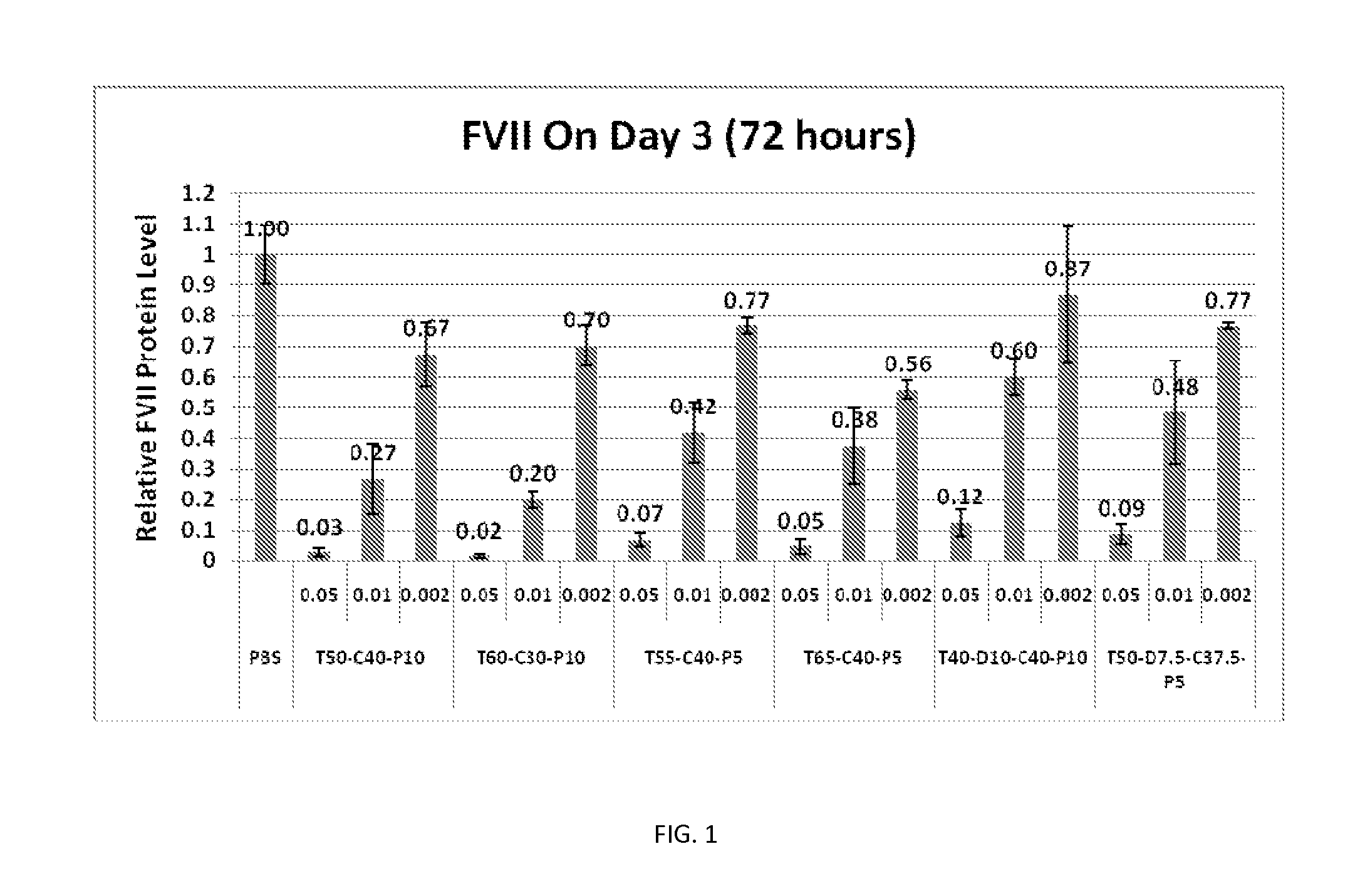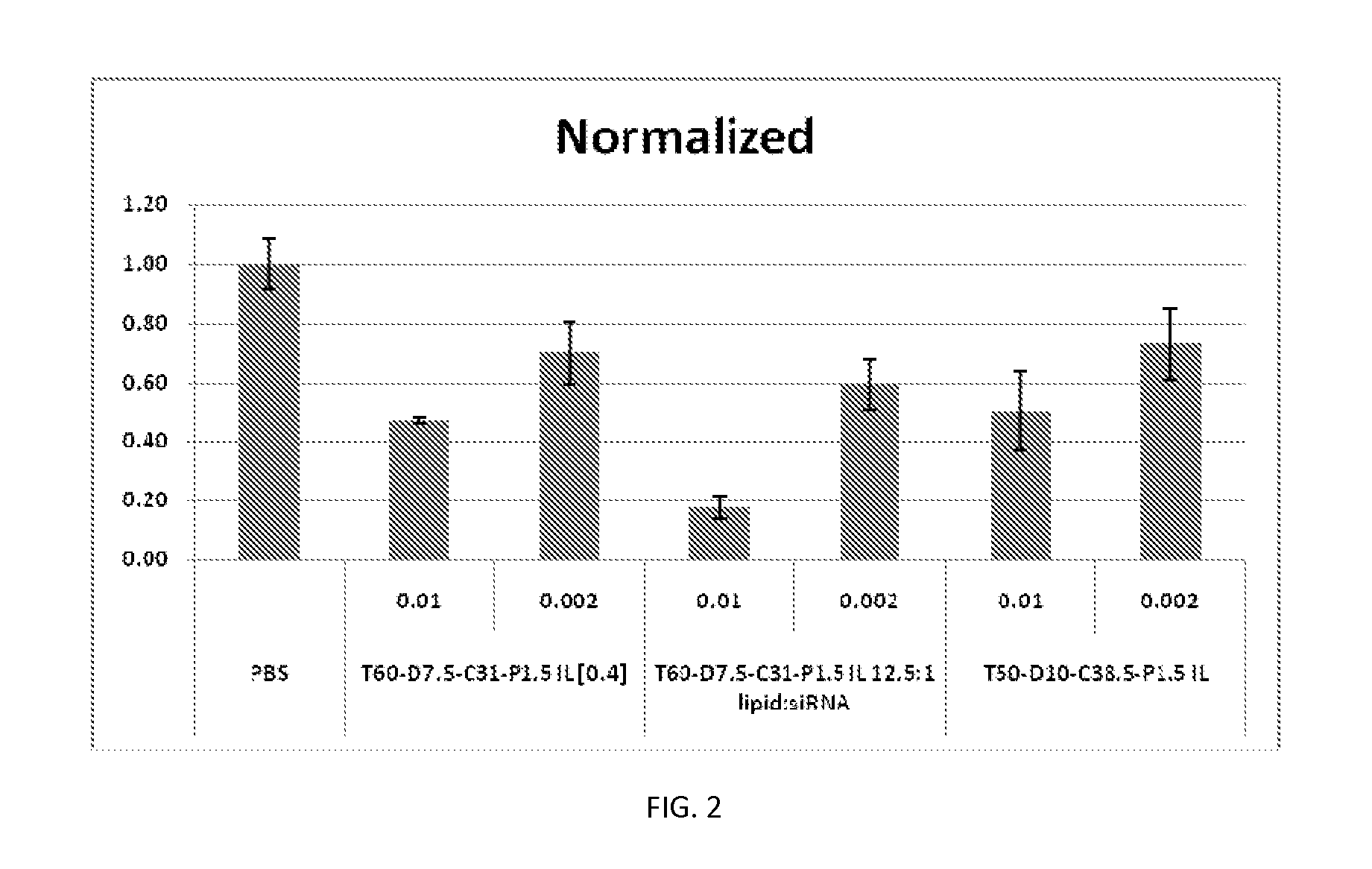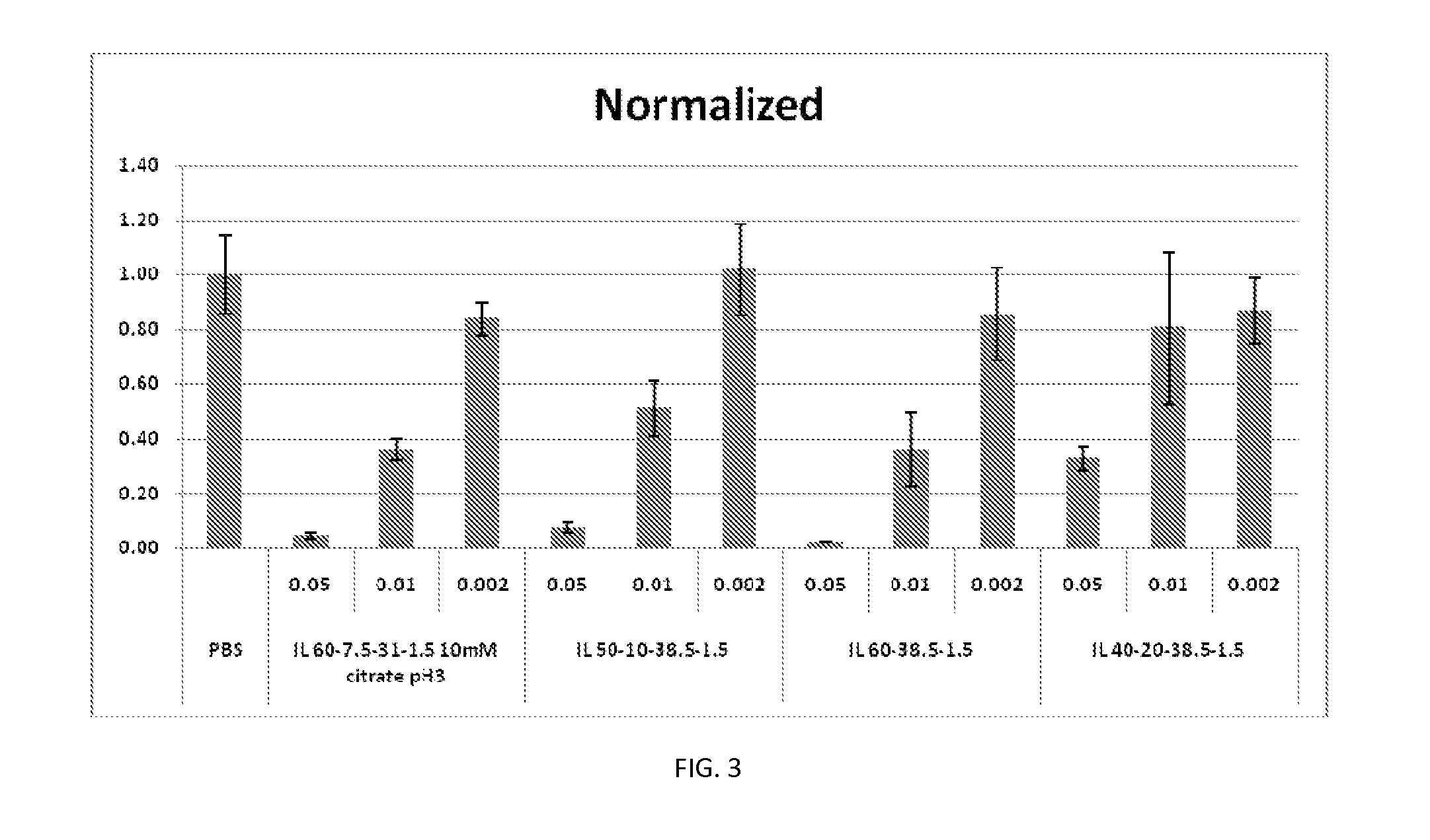Lipid compositions
a technology of lipid compositions and lipid particles, which is applied in the direction of drug compositions, biocide, metabolic disorders, etc., can solve the problems of reduced activity of the construct, reduced the ability to gain access to the intracellular compartment, and susceptibility to nuclease digestion in plasma
- Summary
- Abstract
- Description
- Claims
- Application Information
AI Technical Summary
Benefits of technology
Problems solved by technology
Method used
Image
Examples
example 1
In Vivo Rodent Factor VII Silencing Experiments
[0425]C57BL / 6 mice (Charles River Labs, MA) and Sprague-Dawley rats (Charles River Labs, MA) received either saline or formulated siRNA via tail vein injection at a volume of 0.01 mL / g. At various time points after administration, serum samples were collected by retroorbital bleed. Serum levels of Factor VII protein were determined in samples using a chromogenic assay (Biophen FVII, Aniara Corporation, OH). To determine liver mRNA levels of Factor VII, animals were sacrificed and livers were harvested and snap frozen in liquid nitrogen. Tissue lysates were prepared from the frozen tissues and liver mRNA levels of Factor VII were quantified using a branched DNA assay (QuantiGene Assay, Panomics, CA).
example 2
Regulation of Mammalian Gene Expression Using Nucleic Acid-Lipid Particles
[0426]Factor VII (FVII), a prominent protein in the coagulation cascade, is synthesized in the liver (hepatocytes) and secreted into the plasma. FVII levels in plasma can be determined by a simple, plate-based colorimetric assay. As such, FVII represents a convenient model for determining sirna-mediated downregulation of hepatocyte-derived proteins, as well as monitoring plasma concentrations and tissue distribution of the nucleic acid lipid particles and siRNA.
[0427]Factor VII Knockdown in Mice
[0428]FVII activity was evaluated in FVII siRNA-treated animals at 24 hours after intravenous (bolus) injection in C57BL / 6 mice. FVII was measured using a commercially available kit for determining protein levels in serum or tissue, following the manufacturer's instructions at a microplate scale. FVII reduction was determined against untreated control mice, and the results were expressed as % Residual FVII. Four dose le...
example 3
General Protocol for the Extrusion Method
[0434]Lipids (Lipid (I), (II), (III), (IV), (V) or (VI): DSPC:cholesterol:DMG-PEG) are solubilized and mixed in ethanol according to the desired molar ratio. Liposomes are formed by an ethanol injection method where mixed lipids are added to sodium acetate buffer at pH 5.2. This results in the spontaneous formation of liposomes in 35% ethanol. The liposomes are extruded through a 0.08 μm polycarbonate membrane at least 2 times. A stock siRNA solution was prepared in sodium acetate and 35% ethanol and was added to the liposome to load. The siRNA-liposome solution was incubated at 37° C. for 30 min and, subsequently, diluted. Ethanol was removed and exchanged to PBS buffer by dialysis or tangential flow filtration.
PUM
| Property | Measurement | Unit |
|---|---|---|
| Fraction | aaaaa | aaaaa |
| Fraction | aaaaa | aaaaa |
| Fraction | aaaaa | aaaaa |
Abstract
Description
Claims
Application Information
 Login to View More
Login to View More - R&D
- Intellectual Property
- Life Sciences
- Materials
- Tech Scout
- Unparalleled Data Quality
- Higher Quality Content
- 60% Fewer Hallucinations
Browse by: Latest US Patents, China's latest patents, Technical Efficacy Thesaurus, Application Domain, Technology Topic, Popular Technical Reports.
© 2025 PatSnap. All rights reserved.Legal|Privacy policy|Modern Slavery Act Transparency Statement|Sitemap|About US| Contact US: help@patsnap.com



